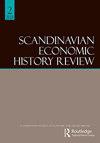妄想社会。瑞典皇家科学院的政治和经济意识形态,1739–1792
IF 0.5
Q4 ECONOMICS
引用次数: 0
摘要
书中并没有令人信服地论证这一论点。这本书清楚地展示了相当大的技术进步,并确定了这些技术的来源(通常是外国的)。但是,在分析的时间范围内,经济的大多数部门都经历了技术改进,而且没有显示采矿部门的改进比其他部门的改进更大。此外,这一论点得到妥善处理的唯一部分是挪威和智利矿业部门的比较。这本书本可以从更多的比较分析中获益。总之,这本书作出了重要贡献。Kristin Ranestad非常详细地阐述了当时采矿业的内部运作,并展示了它如何影响技术发展。这本书推荐给所有希望了解技术如何影响自然资源部门的人,并应作为对其他国家类似研究的启发。本文章由计算机程序翻译,如有差异,请以英文原文为准。
Det villrådiga samhället. Kungliga Vetenskapsakademiens politiska och ekonomiska ideologi, 1739–1792
sented in the book does not convincingly demonstrate this argument. The book clearly shows considerable technological progress and identifies the sources of these technologies (often foreign). However, in the time frame analysed, most sectors of the economy experienced technological improvements, and it is not demonstrated that the improvements in the mining sector were greater than in other sectors. Moreover, the only part in which this argument was dealt with well is when the mining sectors in Norway and Chile were compared. The book would have benefited frommore comparative analysis. In all, this book makes an important contribution. Kristin Ranestad is able to elaborate, in great detail, on the inner workings of the mining sector at the time and show how it affected technological development. This book is recommended to all that wish to understand how technologies affect natural resource sectors and should serve as an inspiration for similar studies on other countries.
求助全文
通过发布文献求助,成功后即可免费获取论文全文。
去求助
来源期刊

SCANDINAVIAN ECONOMIC HISTORY REVIEW
ECONOMICS-
CiteScore
1.60
自引率
16.70%
发文量
20
期刊介绍:
Scandinavian Economic History Review publishes articles and reviews in the broad field of Nordic economic, business and social history. The journal also publishes contributions from closely related fields, such as history of technology, maritime history and history of economic thought. Articles dealing with theoretical and methodological issues are also included. The editors aim to reflect contemporary research, thinking and debate in these fields, both within Scandinavia and more widely. The journal comprises a broad variety of aspects and approaches to economic and social history, ranging from macro economic history to business history, from quantitative to qualitative studies.
 求助内容:
求助内容: 应助结果提醒方式:
应助结果提醒方式:


